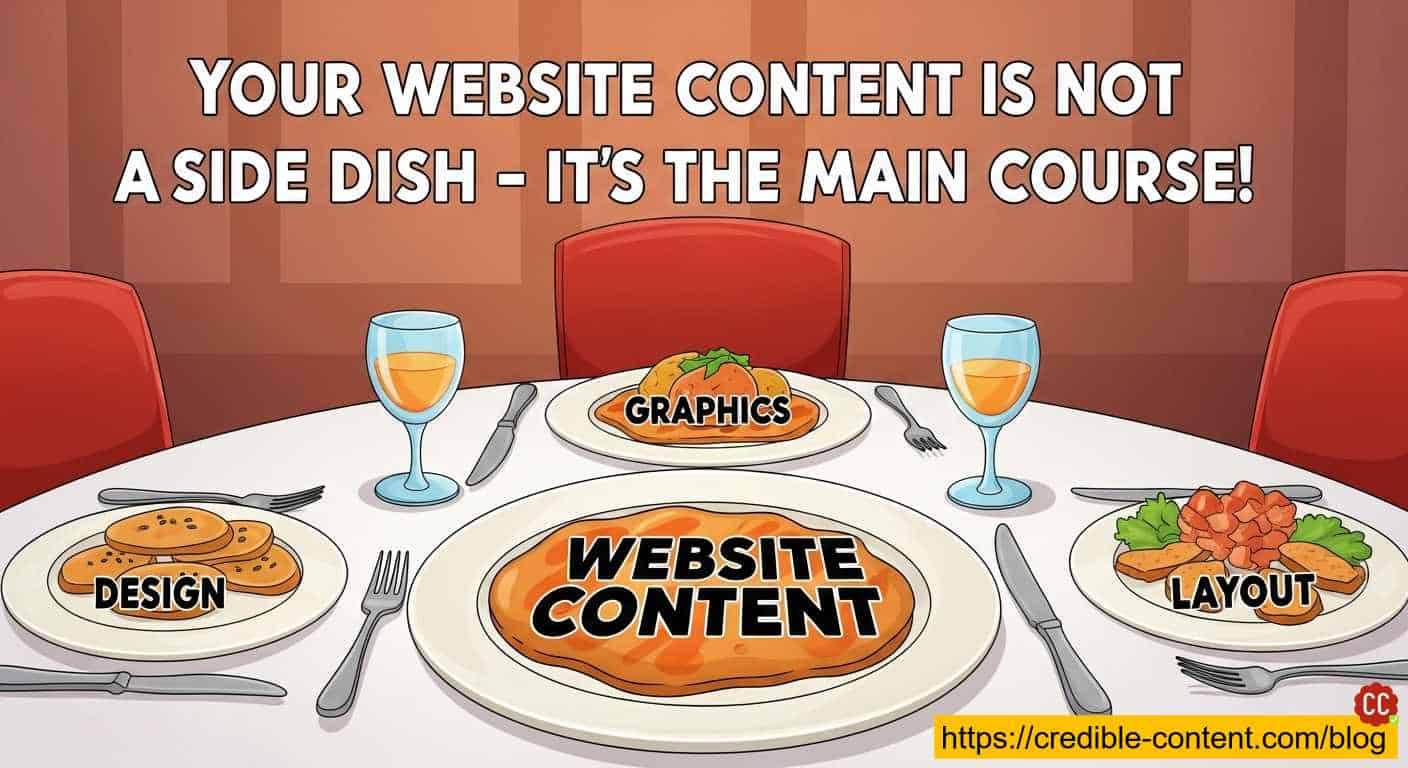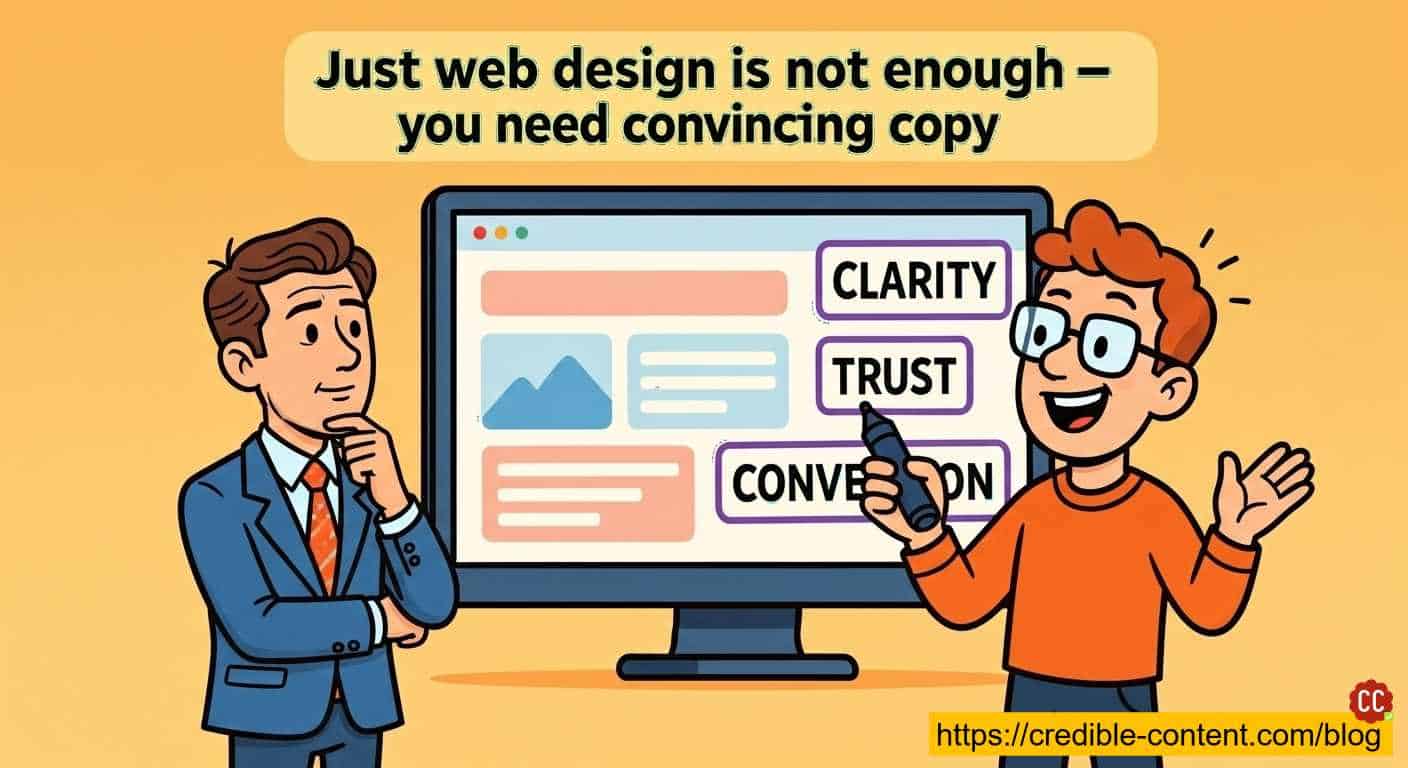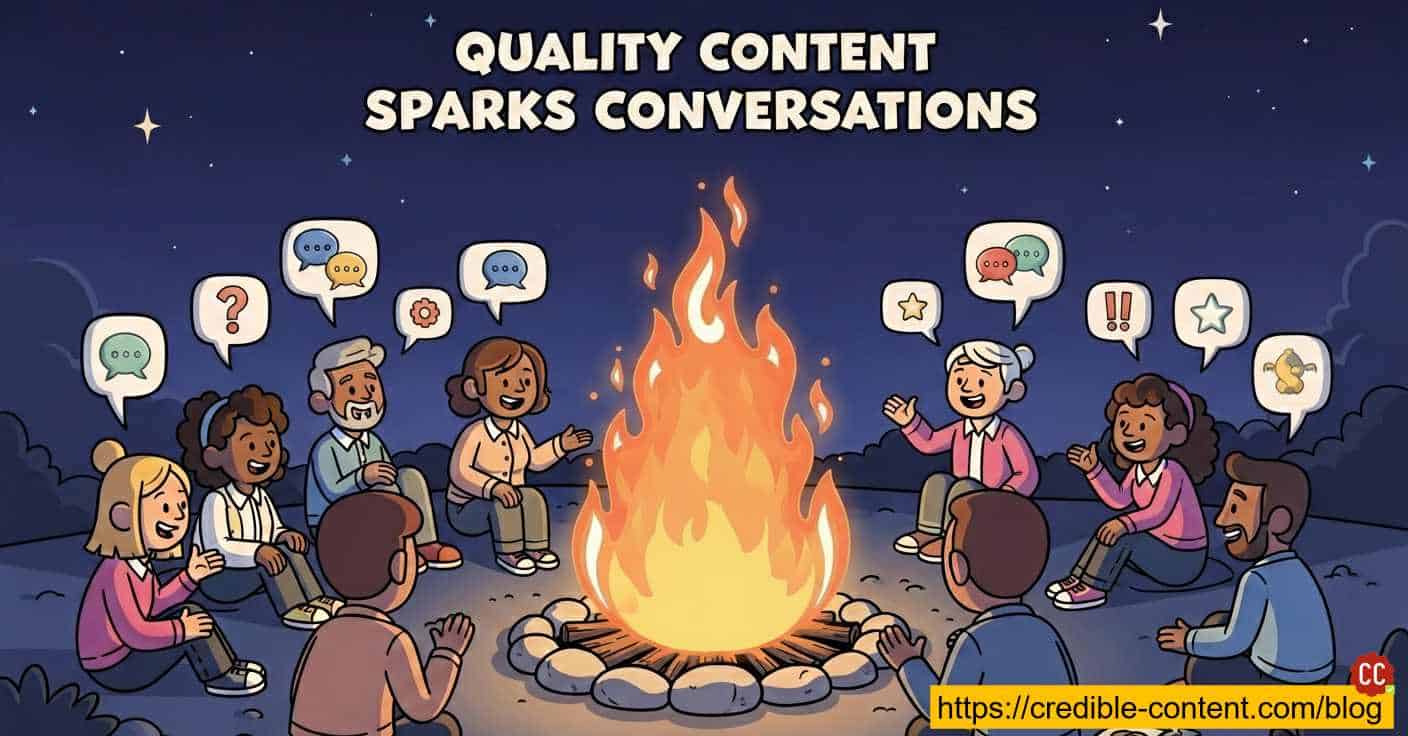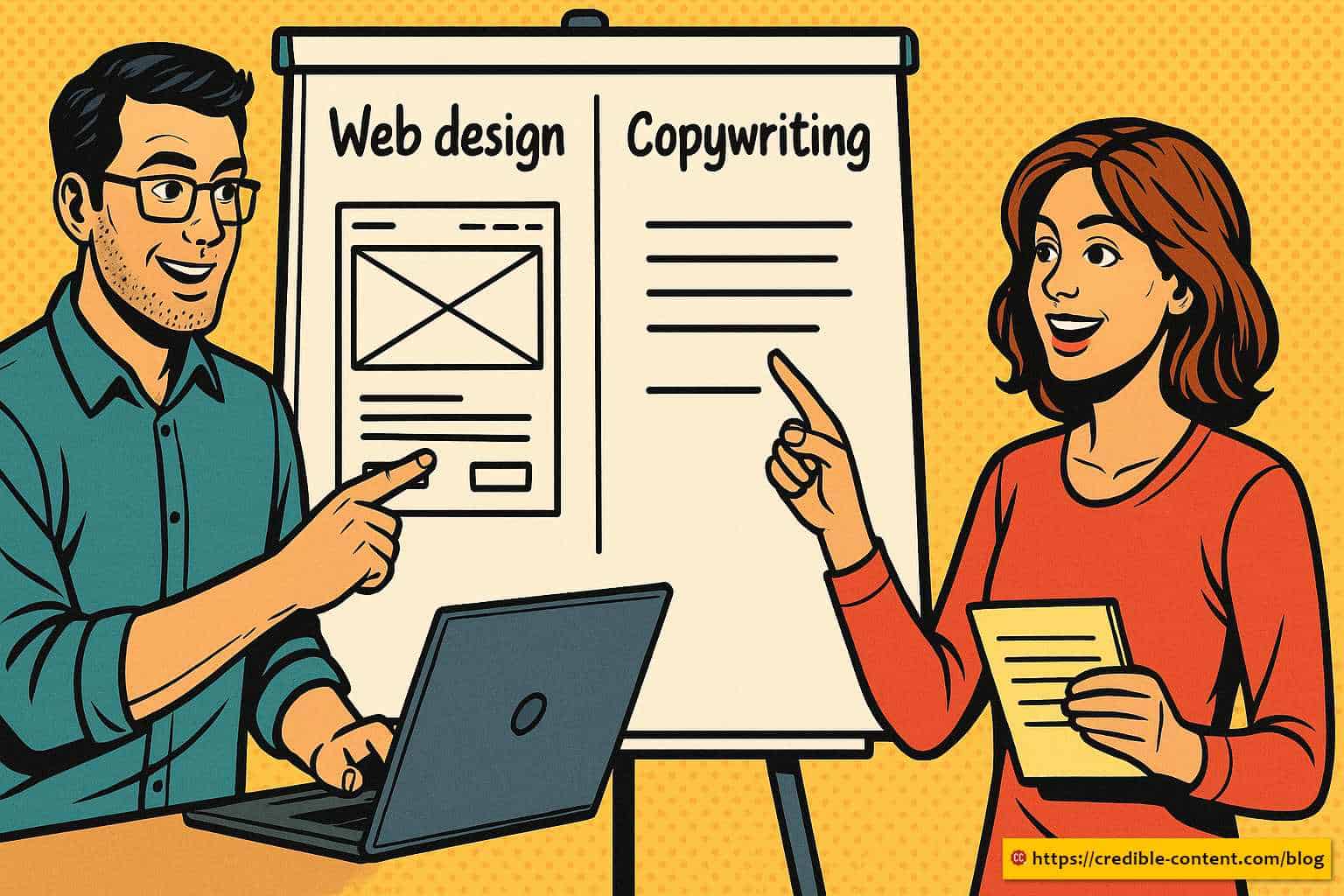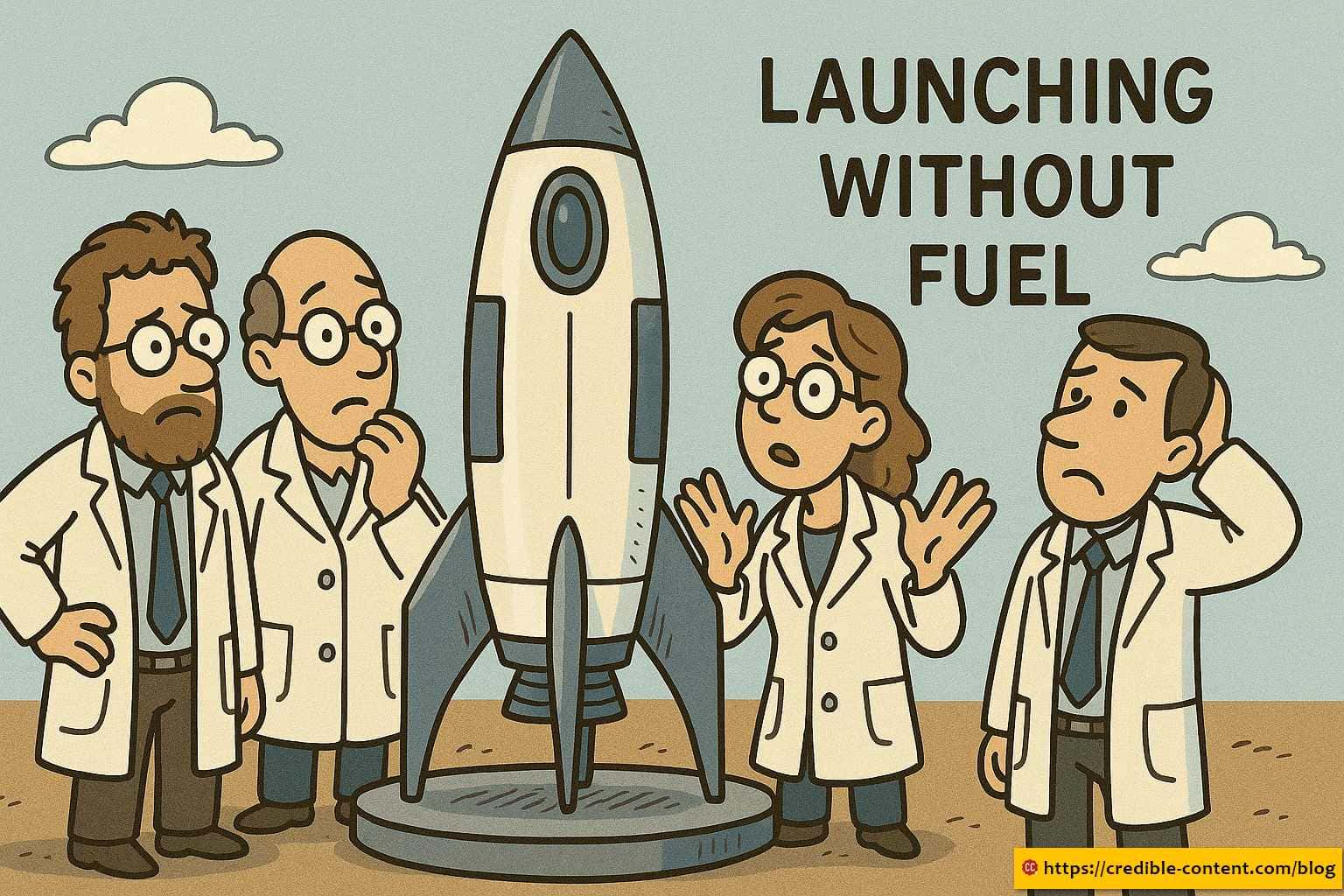
Launching a website without good content is like launching a rocket without fuel
You’ve seen it. I’ve seen it.
A website that looks like it belongs in a design award showcase – sleek typography, stunning visuals, clever animations. But dig a little deeper, and the cracks show. Visitors scroll, hesitate, then click away. Leads? Zero. Sales? Dead. The designer blames the client, the client blames the designer, but the real problem sits in plain sight. The words.
Design without content is like a sports car without an engine. It might turn heads, but it won’t get anyone anywhere. Yet time and again, agencies build dazzling websites only to fill them with either lorem ipsum or client-supplied copy that reads like a boring brochure. The result? A portfolio that looks beautiful on Dribbble but delivers nothing in the real world.
This is exactly why you, as a web design or development company, can’t ignore content anymore. It’s not decoration. It’s not filler. Content is strategy, sales, and SEO rolled into one. And if you don’t give it the same priority as design and code, you’re setting your clients – and your own reputation – up for failure.
I’ve worked with agencies where everything was right visually, but the message was a complete mess. One business process company had a clean, modern website, but no one could figure out what they actually did. Once I rewrote their copy, suddenly the site spoke to business owners in plain language. The difference was night and day. Traffic that once bounced started to convert.
Another case: a web design agency itself. They specialized in serving cloud software development companies. Great niche, right? The only problem – their website never communicated it clearly. They looked like every other generic web design firm. No wonder they weren’t getting leads. When I revamped their content, the positioning became sharp, targeted, and impossible to miss. Within weeks, leads started rolling in. That’s what happens when you align design with words that sell.
This blog is for you if you run a web design or development company. Maybe you need stronger content for your own site. Maybe you want to offer content writing and copywriting to your clients without hiring in-house. Either way, this post will show you why content-first design isn’t just an idea – it’s a survival strategy.
Over the next sections, I’ll break down exactly:
- Why design fails without strong content.
- How words guide design, UX, and SEO.
- Why outsourcing a content writer or online copywriter makes you look full-service.
- And how to position yourself as the agency that doesn’t just deliver websites, but delivers websites that convert.
Because here’s the truth: pretty websites don’t make money. Websites with strong design and strong content together do.
Online copywriter for web design companies: when design and content work together
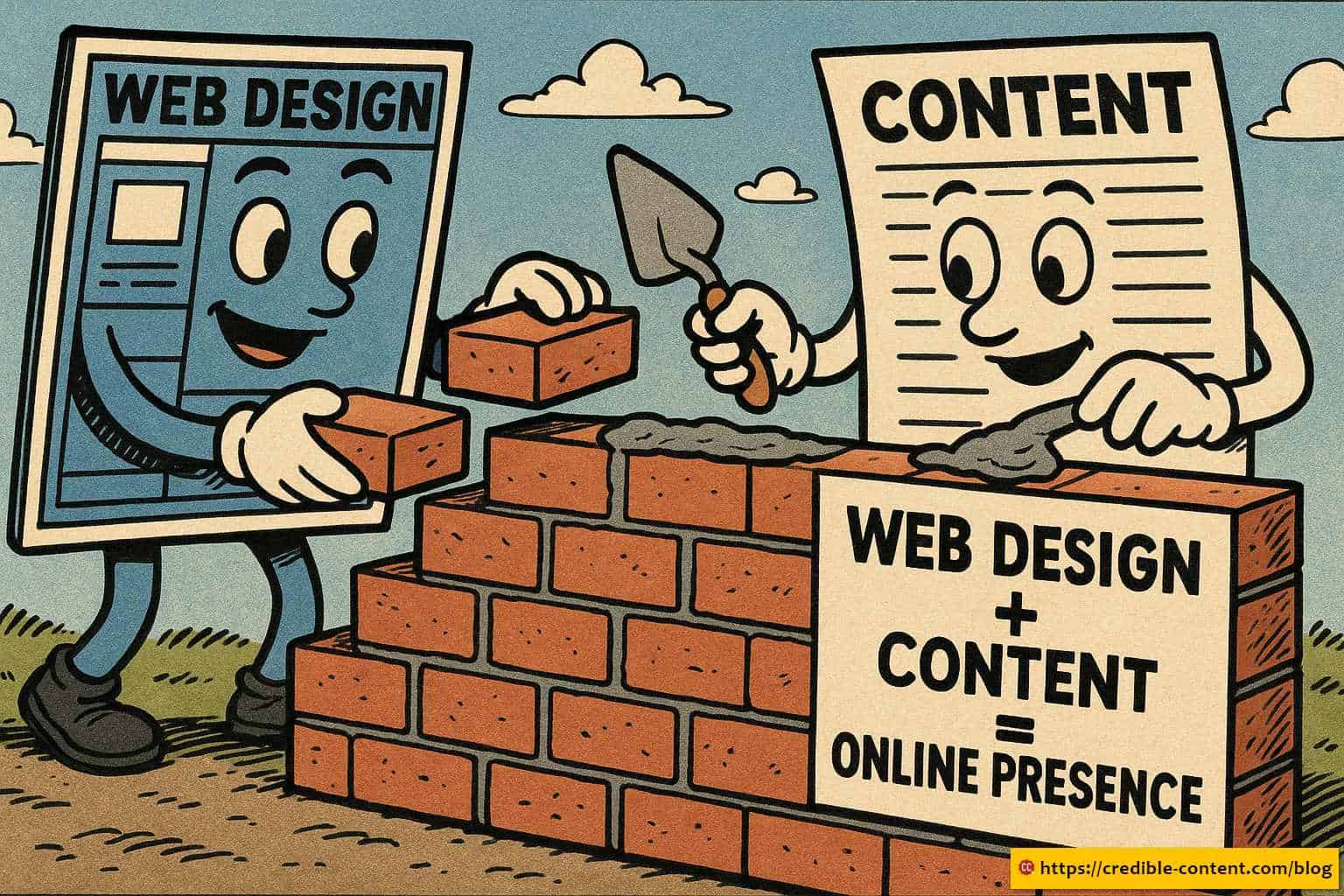
Your web design and web content must work together
I’m going to rip off the rose-colored glasses right now: if you’re building sites before nailing the words, you’re aiming for failure.
Design without real words is halfway broken
Here’s a gut-hitter from 2025: 61.5% of web designers blame bad navigation – a symptom of poor content structure – for why visitors bail on a site. Translation: even the slickest design can’t save weak content architecture.
Another stat: 34.6% of visitors leave because the content structure sucks. That’s not a typo – about a third of your traffic bounces simply when they can’t parse what the hell you’re saying.
And then there’s this: 70% of customers abandon purchases due to poor UX, and every single second of delay in page load can cut conversions by 7%. The takeaway? If your design doesn’t purpose-serve the words and vice versa, you’re bleeding conversions – and fast.
Content isn’t just icing. It’s the engine.
Think of content as the GPS guiding visitors through your site – not just showing up the exit.
A content-first approach flips the script: it puts messaging and intent before layout. That means:
- Layouts built around actual headlines and benefits – not lorem ipsum.
- Navigation, CTAs, and information hierarchy shaped by what you’re saying, not what looks pretty.
- A huge cut in redesign rounds: no more shoehorning copy into a layout that doesn’t fit.
A content-first helps storytelling, streamlines process, ensures consistency – and yes, it fuels SEO.
And let’s drop some design psychology: you have just 50 milliseconds for visual design to pass the vibe-check – and only 10 seconds afterwards to land the message, according to Scope Design. Miss that window on either front, and you’re invisible.
Anecdote: when words rescued a design
Remember that web design agency I worked with – brilliant designers, but they didn’t clearly communicate they served cloud software businesses. Their messaging was vanilla. The result? No leads. They might as well have been invisible.
Then I jumped in and rewrote core pages to make their niche unmistakable. Suddenly, the sales calls started. Their design wasn’t broken – just silent. This is the power of words that speak.
Design without focused content is like giving a racecar a blown engine and expecting it to win. If you’re an agency, don’t let good visuals kill your credibility. Get the words right first, then let the design shine on purpose.
Think your own site looks good – but the bounce rate screams otherwise? That’s the exact moment to bring in a content-first strategist like me. Let’s make your message run as fast as your visuals do.
Content writer for web development companies: the missing piece in technical builds
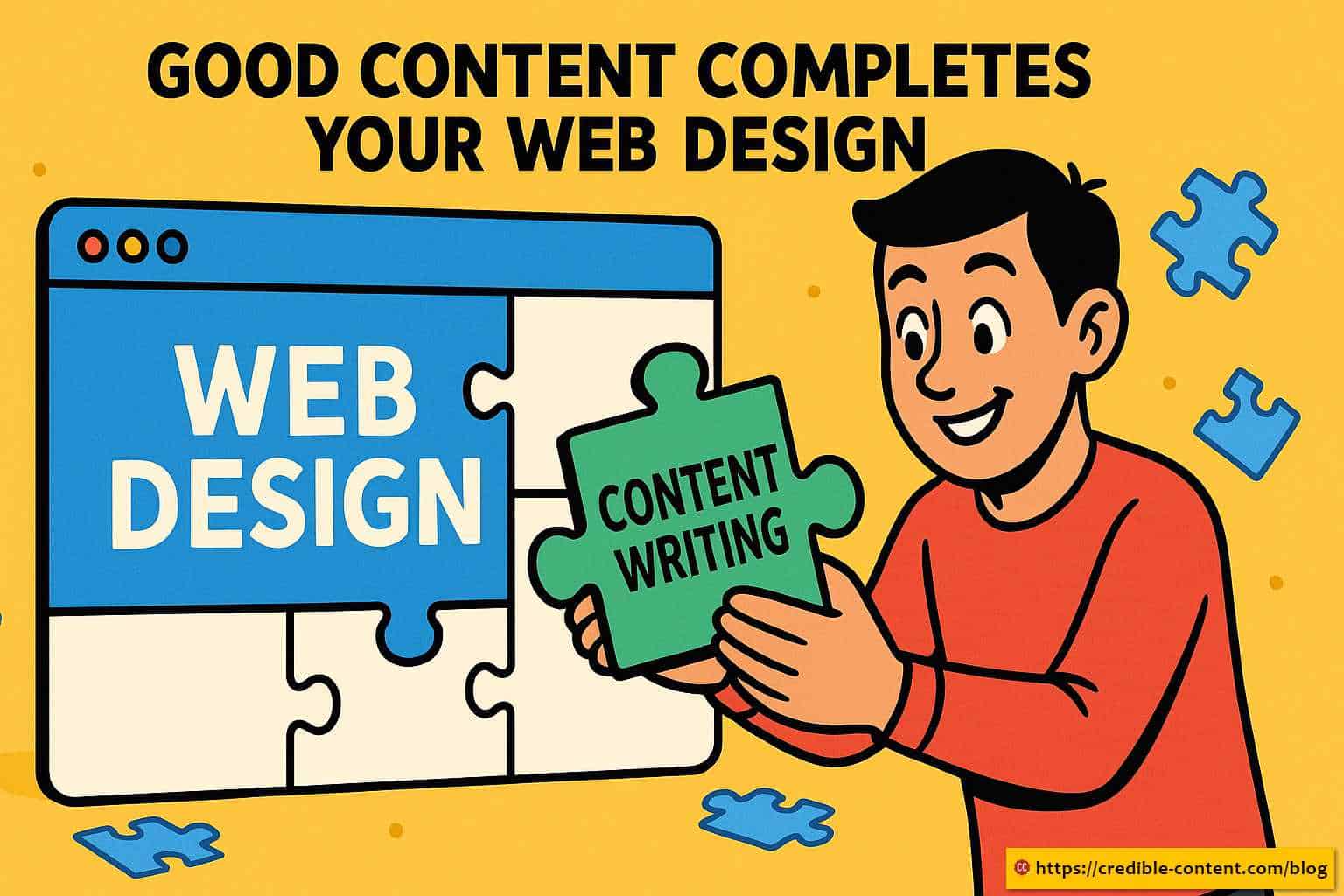
Web development isn’t complete without good copywriting
Most web development companies believe their job ends once the code is clean and the framework responsive. On paper, that’s true. But when the content is weak or missing, the whole build falls apart.
The silent killer: empty frameworks
How many times have you seen a site architecture polished to perfection, yet filled with lorem ipsum? The developers deliver their part. The client promises content. And then nothing. Deadlines slip. Projects stall. Frustration builds. When the content finally arrives, it’s a half-baked Word doc –dense jargon, no flow, no SEO, no persuasive edge.
A 2024 report on web projects found that delays due to missing content are one of the top reasons agencies lose client trust (contentsnare.com). That’s not a side issue. It’s the Achilles’ heel of development teams everywhere.
Why developers can’t win alone
Clean HTML. Bulletproof CSS. Slick JavaScript. All of it is meaningless if the site doesn’t explain why someone should buy, sign up, or call. Code doesn’t sell – content does.
I saw this firsthand with a business process website. The build was flawless. Page speed excellent. Interface smooth. Yet the message was incoherent. Visitors had no clue how the company helped businesses grow. The site didn’t fail because of bad development. It failed because the words weren’t doing their job. Once I rebuilt the copy, the site finally spoke the market’s language. Leads followed.
Content-first saves developers too
Developers often think content slows them down. The truth is, content-first makes their job faster and cleaner.
- Wireframes match real messaging instead of placeholders.
- Architecture reflects what people need to read, not just what looks balanced.
- SEO is baked into tags, metadata, and URLs from the start.
- And perhaps the biggest relief: clients stop holding projects hostage while they scramble to write.
Research supports this – content-first projects cut revision rounds and scope creep significantly (uxwritinghub.com).
If you’re a web development company tired of chasing clients for half-written content, bring in a professional content writer. I handle the words. You handle the code. Together we deliver projects that launch on time and actually perform.
Online copywriter for web development companies: improving user experience with words
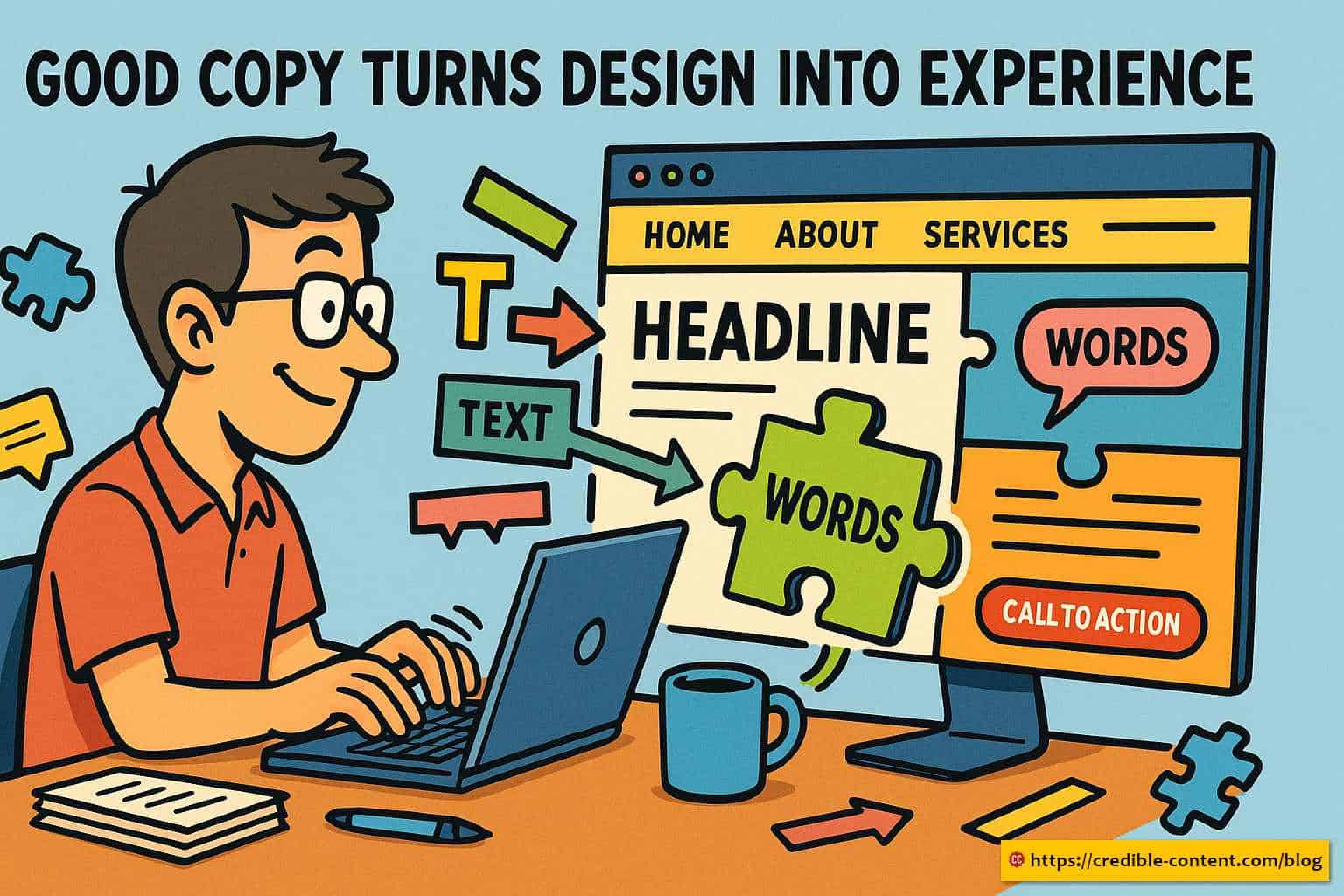
Improve user experience with good copywriting
User experience isn’t only about design grids, load speed, or responsive frameworks. It’s about clarity. People land on a site looking for answers. If the words don’t guide them, the design can’t save the day.
Why words shape UX
Think about the last time you abandoned a form. Chances are, the instructions were vague or the error message felt robotic. That’s not a design flaw – it’s a copy flaw. Microcopy, the tiny words on buttons, forms, and alerts, can make the difference between a smooth journey and a rage-quit.
Studies show that 88% of online users won’t return after a bad experience (sweor.com). And a huge part of that “experience” comes from how information is communicated. Not just the look, but the language.
Now, couple that with another reality: users read only 20% of the text on an average web page (nngroup.com). This means every word has to work hard. If you bury meaning under fluff, jargon, or developer-speak, you’ve lost them.
The intersection of content and design
When content leads, UX flows naturally:
- Headlines frame what each section delivers.
- Buttons and CTAs tell users exactly what happens when they click.
- Error messages guide instead of scold.
- Navigation labels describe where a link will take you – not just clever design terms.
A design-only approach tries to guess how people will behave. A content-first approach speaks to them directly, removes friction, and builds trust.
A quick story
I once worked with a developer who built a flawless SaaS dashboard. Every feature was where it belonged. The problem? Users couldn’t figure out what the product did. The navigation labels were vague. The CTAs were generic. The onboarding text was nonexistent. Together we rewrote the copy with real users in mind. Suddenly, the same dashboard felt intuitive. People weren’t just clicking – they were converting.
If you’re a web development company, stop treating content as an afterthought. Bring in an online copywriter who knows how words and design work together. That’s how you turn functional builds into experiences people actually want to use.
Content writer for web design website: why agencies should include copywriting in projects
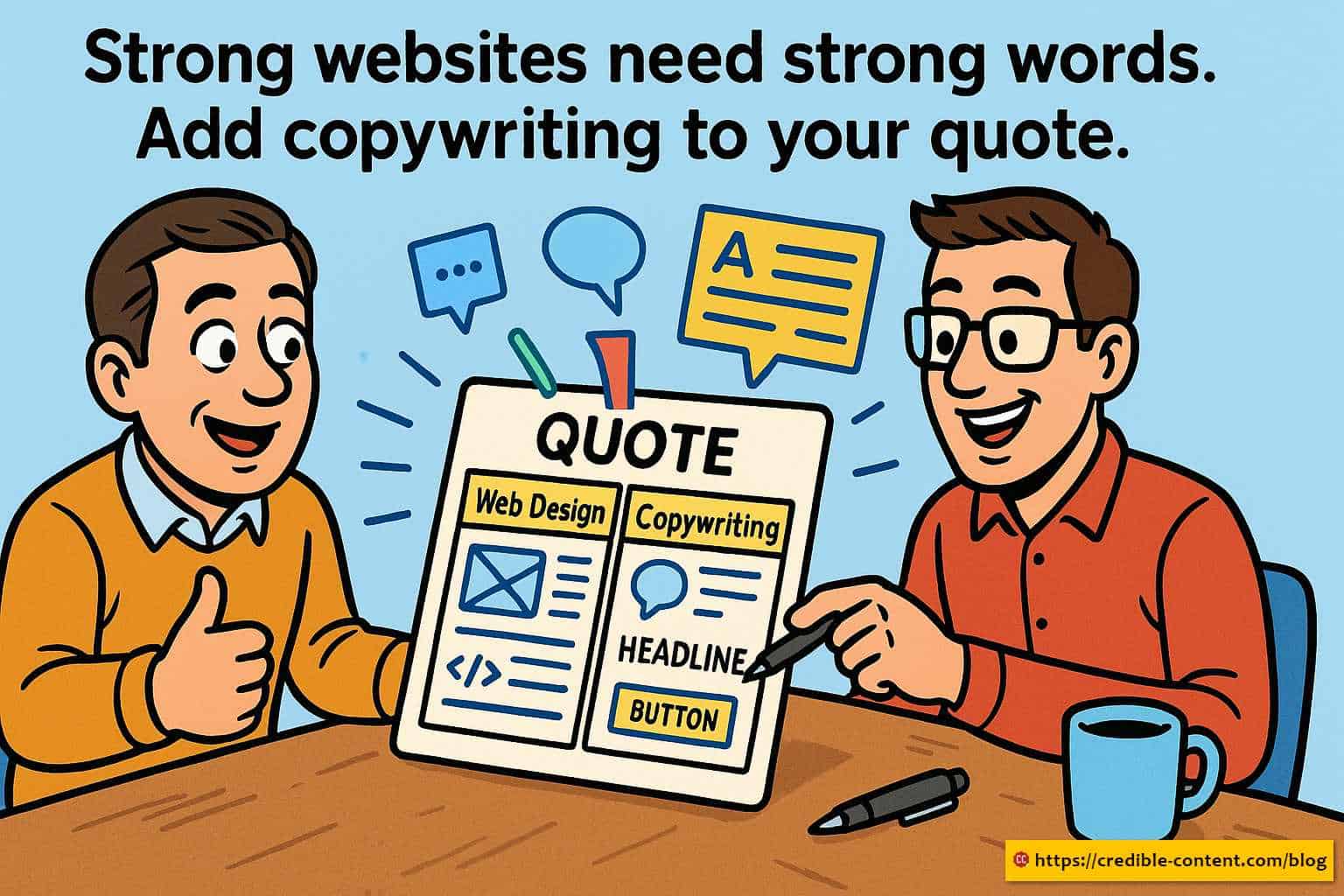
Include the cost of copywriting when giving web designing quotes to your clients
Web design agencies love to showcase visuals. The typography, the color palettes, the animations. But here’s the problem – clients don’t buy design. They buy clarity. They buy confidence. They buy the words that tell them they’re in the right place.
Why agencies need to offer content alongside design
Too many agencies hand over sites with a disclaimer: “Content to be provided by client.” That line is a time bomb. Clients almost never deliver strong copy. What you get back is either:
- Thin, rushed text written at midnight.
- Copy stuffed with buzzwords and zero benefit.
- Or, worst of all, no content at all.
And when that happens, who do clients blame? Not themselves. They blame the agency. They don’t care if you built a beautiful site – they care that it doesn’t convert.
This is where offering professional content writing as part of your package changes the game. It keeps projects moving. It keeps clients happy. And it turns you from “just another design shop” into a full-service partner.
Fewer delays, smoother workflows
Industry surveys show that content delays are the #1 cause of late web projects (contentsnare.com). Think about how many hours you’ve lost chasing clients for missing text. When you control the content process, those delays disappear.
A content-first workflow means:
- You present clients with drafts instead of blank templates.
- Designers and writers collaborate, so layouts match messaging.
- Projects launch on time, with both visuals and copy ready to perform.
This isn’t just about efficiency. It’s about positioning. Agencies that control both design and content are seen as more reliable, more professional, and more valuable.
A real example
I once helped a web design agency that had everything running smoothly – except the copy. Every project stalled because clients dragged their feet on content. By partnering with me as their go-to content writer, they cut delays, kept projects on schedule, and, best of all, started upselling content as an add-on service. Suddenly, their revenue per project increased without hiring extra staff.
If you run a web design agency, stop letting content bottlenecks kill your timelines. Add a professional content writer to your process. You’ll keep clients loyal and make your agency look bigger, sharper, and more complete.
Copywriter for web design website: how poor copy hurts even great portfolios
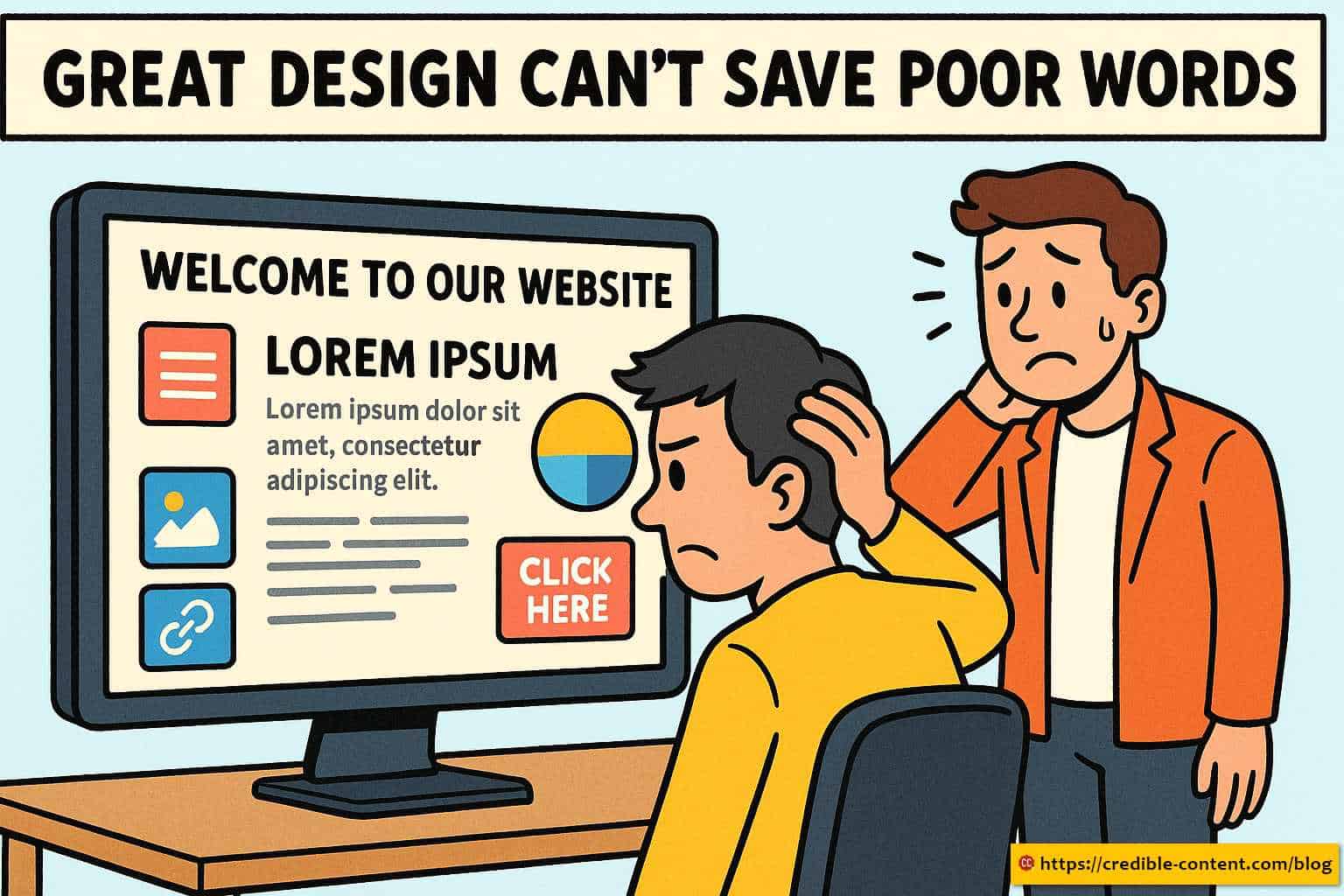
Poor copywriting hurts even well-designed websites
As a designer, you pour hours into perfect layouts. Smooth grids, balanced whitespace, sharp visuals. Then the client pastes in weak content, and suddenly the masterpiece looks second-rate.
Why weak words drag design down
Good design frames the message. If the message is sloppy, the frame can’t save it. Imagine a high-end poster with misspelled words. Or a luxury brochure filled with clichés. That’s how weak website copy makes even top-tier design look cheap.
A survey of marketers revealed that 73% of companies struggle with creating content that engages readers (contentmarketinginstitute.com). For web design agencies, this struggle shows up right in the portfolio. Potential clients don’t separate design from words – they see the website as one experience. If the words flop, the design looks like a flop too.
The hidden cost to your reputation
The thing is that once the site goes live, no one blames the client for writing bad copy. They blame the agency. They’ll say, “That agency made our site, and it didn’t work.” Your design gets judged by content you never touched.
I’ve seen this play out. One agency I worked with had brilliant visuals but generic copy across multiple projects. Their portfolio looked slick on the surface, but dig in and the messaging was flat. Prospects started questioning their ability to deliver results. Once I stepped in to rebuild the copy, suddenly their portfolio wasn’t just pretty, it was persuasive.
Before and after: the difference content makes
Take a simple homepage hero section.
- With weak copy: “We provide innovative solutions for your business needs.”
- With strong copy: “Cloud-ready web apps that cut downtime and grow your revenue.”
Same design. Two totally different impacts. One makes the agency look like every other vendor. The other makes them look like the only logical choice.
Don’t let poor client copy drag down your portfolio. As a copywriter for web design websites, I make sure your designs are supported by words that sell. That way, every project you launch strengthens your reputation instead of weakening it.
Content writer for web development website: bridging code and communication
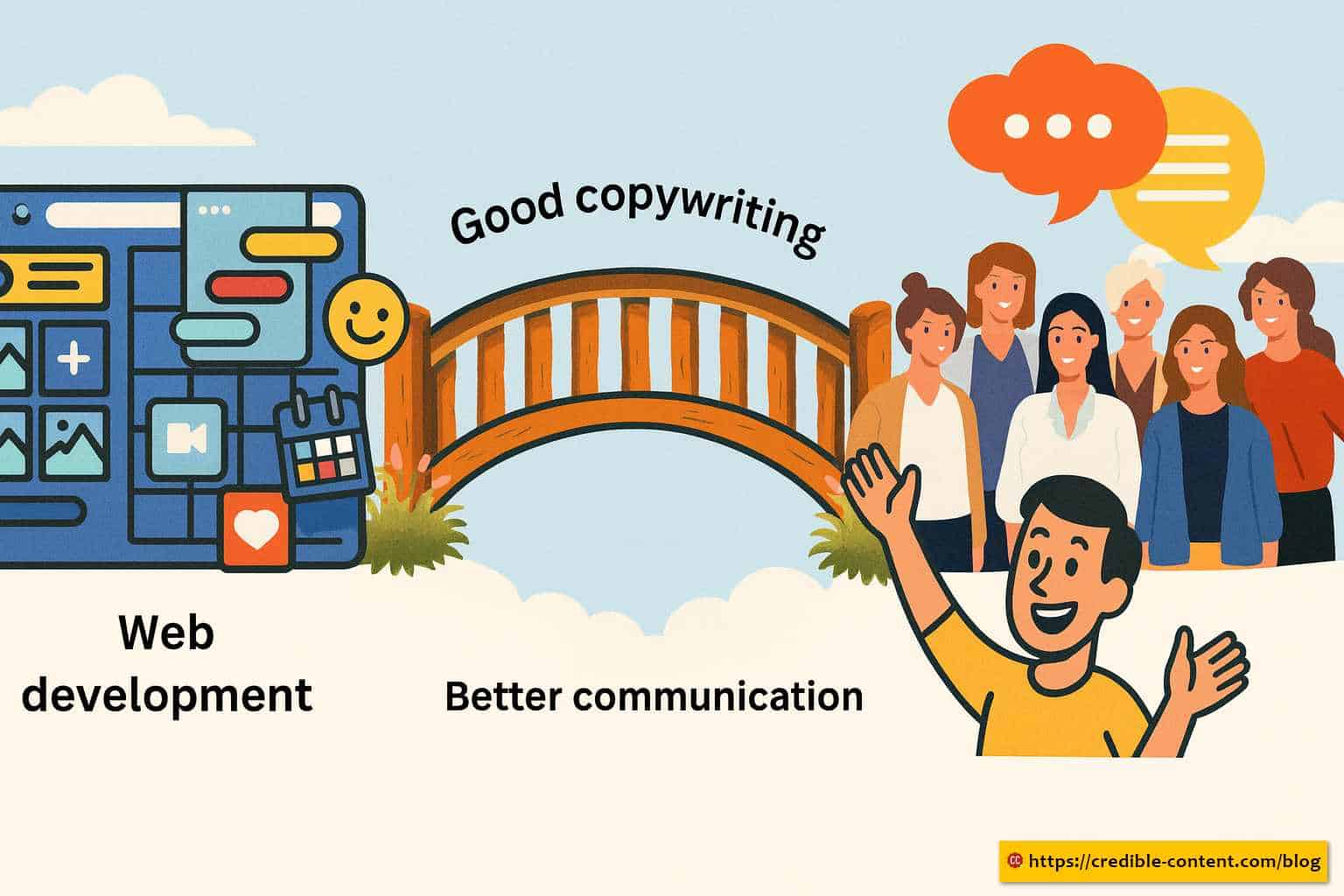
Good copywriting builds a bridge between your website and good communication
Web development is about structure. Content is about meaning. When one exists without the other, the end result feels hollow. A perfectly coded site with weak content is like an empty shell – technically sound but emotionally dead.
Why developers need content as a partner
Developers think in logic. Functions, databases, frameworks. Clients think in outcomes. Revenue, leads, credibility. That gap is exactly where strong content bridges the two. Without it, the client sees only a shiny interface that doesn’t explain what it delivers.
A study by Adobe found that 38% of people stop engaging with a website if the content or layout is unattractive (adobe.com). Notice how content and layout are mentioned together. Users don’t separate them—they expect both to work seamlessly.
Content prototypes make development easier
Instead of waiting until the end, developers should start with content prototypes. That means using real copy or near-final drafts during the build. Benefits include:
- More accurate wireframes.
- Better testing of navigation and flow.
- Fewer redesign cycles.
- SEO baked into site architecture from day one.
This isn’t theory—it’s a proven practice. Teams that adopt content prototypes reduce revisions and speed up launches (alistapart.com).
A real-world lesson
I once worked with a development team building a site for a SaaS product. Their backend was bulletproof, but the site’s language was robotic and buried in jargon. Features were described in technical terms that made sense to coders but not to potential buyers. Once I rewrote the copy in plain language – explaining outcomes instead of inputs – the same site suddenly became persuasive. The developers hadn’t changed a line of code, but the client finally saw conversions.
If you’re a web development company, stop treating content as “client responsibility.” Partner with a content writer who understands how to translate complex systems into simple, persuasive language. Your code builds the structure. My words bring it to life.
Copywriter for web development website: outsourcing content to scale agency services
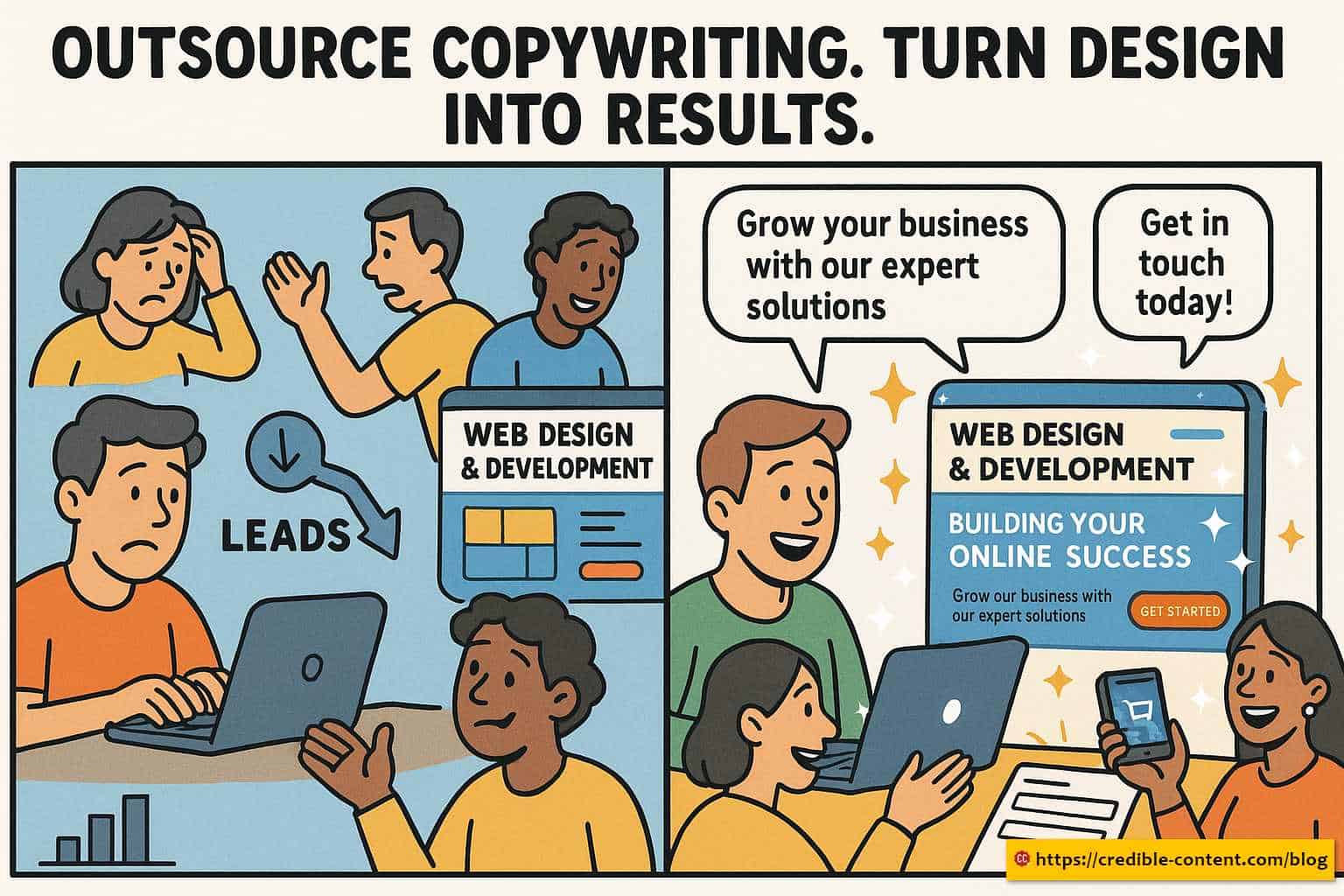
Outsource your website content writing and copywriting needs
Small and mid-sized development companies often hit the same wall: they deliver clean code, reliable frameworks, and fast-loading sites – but when clients ask for content, they freeze. Hiring a full-time writer isn’t realistic. Letting clients handle their own copy leads to disaster. The smart move? Outsourcing.
Why outsourcing website content writing gives you scale without the overhead
Outsourcing a professional copywriter lets you offer content writing as part of your package without carrying extra payroll. You look like a full-service agency, while keeping your operations lean. Clients love it because they don’t have to manage multiple vendors. You’ll love it because projects flow smoother, faster, and with less back-and-forth.
A survey on agency growth trends showed that 42% of agencies outsource at least some part of their content production. Why? Because it lets them handle bigger projects and more clients without hiring full-time staff.
How outsourcing makes agencies look bigger
When you hand over a finished website that includes professional copy, clients assume your team handled everything in-house. You suddenly look like a larger, more capable agency – even if you’re just a lean shop with a few developers. That perception of scale builds trust and justifies higher fees.
I’ve partnered with agencies exactly this way. They bring me in quietly, I deliver copy that matches their builds, and their clients walk away thrilled. The agencies keep full credit while I make sure the words pull their weight. Everybody wins.
Revenue impact you can measure
Outsourcing doesn’t just solve the content problem – it boosts revenue. Agencies that add content writing to their packages increase their average revenue per project by up to 30%. That’s not a rounding error. That’s money you leave on the table every time you deliver a site without professional content.
Content-first vs design-first web strategy
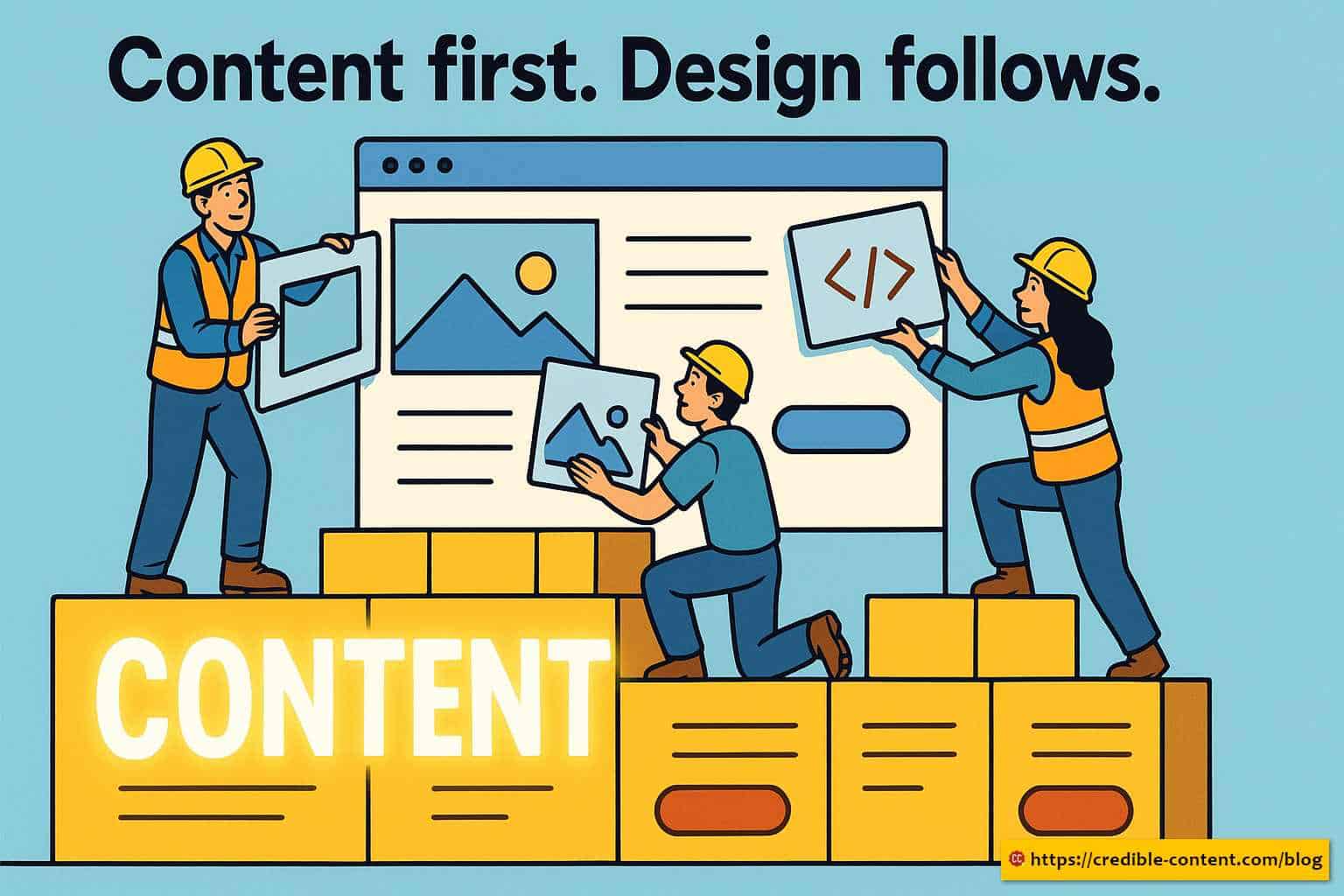
Write content before designing the website
Every agency faces the same decision at the start of a project: do you lead with visuals or with words? Too many still go design-first, sketching layouts before a single headline exists. It feels efficient, but in reality, it sets you up for endless rework.
Why design-first falls short
When you build layouts before content, you’re guessing. Headings don’t fit. CTAs end up crammed into the wrong places. Important benefits get buried because the design left no room for them. The site may look neat, but it won’t persuade.
Research from the UX Collective highlights that content-first approaches reduce revision cycles and speed up launches compared to design-first projects. Designers save time, clients save money, and the final product performs better.
Why content-first wins
A content-first strategy means starting with the story. You define the audience, the message, the hierarchy of information. Then you design layouts to support that narrative. The result feels natural because the words and visuals were built to work together.
Content-first also delivers a hidden advantage: SEO. When content leads, keyword mapping, metadata, and page structure all flow logically into the build. You’re not retrofitting SEO at the last minute – you’re weaving it in from the ground up. That’s how you build sites that both look good and rank.
Story from the field
I worked with a design team that insisted on building the wireframes first. By the time the copy arrived, nothing fit. Headlines were too long. Service descriptions spilled into awkward spaces. They wasted weeks resizing and redesigning. Contrast that with another project where I wrote the copy upfront – the designers dropped it into wireframes like puzzle pieces clicking together. No delays. No wasted effort. That’s the power of starting with content.
Choose the smarter workflow. Lead with content, and let the design bring it to life. You’ll save hours, cut frustration, and deliver websites that actually perform.
Why content-first design drives conversions better than visuals alone
Pretty websites don’t pay the bills. Conversions do. And conversions don’t happen because someone liked your color scheme – they happen because the words convinced them to take action.
The role of persuasive copy in conversions
Design captures attention, but copy carries it forward. A bold hero image may stop someone from scrolling, but it’s the headline that tells them they’re in the right place. It’s the subhead that explains the benefit. It’s the call-to-action that nudges them to click.
Marketing research shows that changing just a few words in a CTA can increase conversions by up to 90% (hubspot.com). That’s not design magic—that’s copy at work.
Why visuals alone can’t sell
Visuals inspire feelings, but they rarely answer questions. A visitor still wants to know:
- What do you offer?
- Why should I trust you?
- How does this help me?
- What should I do next?
Design can guide the eye, but content delivers the answers. Without them, the user leaves impressed but unconvinced.
A real example
That web design agency I mentioned earlier? They had nailed their visuals. Their site looked every bit like a modern, professional agency. But because they hadn’t made their niche clear – web design for cloud software companies – their message got lost. They weren’t failing because of design. They were failing because of vague copy. Once the content spelled out who they served and what they delivered, the leads started coming.
Conversion copywriting principles that matter
When content leads, conversions follow. Key principles include:
- Clarity over cleverness – your value must be obvious in five seconds.
- Benefits over features – people want outcomes, not tech jargon.
- Strong CTAs – tell people exactly what happens when they click.
- Consistency – align headlines, subheads, and button text so the journey feels seamless.
Want your websites to do more than look good? Build them on words that persuade, not just visuals that impress. That’s how you turn browsers into buyers.
How web design companies can sell content writing to clients
Most agencies know content is a problem. They’ve been burned by client delays, weak copy, and projects that stall because no one owns the words. The irony is, solving this problem isn’t just good for workflow – it’s good for revenue.
Why clients resist paying for content
Clients often believe they can “just write it themselves.” They underestimate how hard it is to create copy that’s clear, persuasive, and SEO-friendly. So they stall. They struggle. And eventually, they hand over a Word file that makes their brand sound bland. By that point, the agency’s reputation is on the line.
Position content writing as part of the package
Instead of waiting for this train wreck, agencies should package content writing upfront. Don’t make it optional. Present it as part of the process. The pitch is simple:
- Content is the foundation of design.
- Without it, timelines blow up.
- With it, projects launch faster and perform better.
Agencies that bundle copywriting not only avoid delays but also increase average project revenue by 20–30% . That’s real growth.
Talking points that close deals
When clients hesitate, agencies can hit them with simple truths:
- “You’re hiring us for expertise in design. Why trust amateurs with your message?”
- “Content delays kill timelines. With us, you won’t face that problem.”
- “Strong copy improves SEO and conversions – without it, design alone can’t deliver results.”
Example from the field
I worked with an agency that dreaded client content delays. Every project was a waiting game. Once they began offering me as their go-to copywriter, something changed: projects stopped stalling, clients were happier, and upsells became easy. Instead of apologizing for late launches, they started bragging about their efficiency.
Sell websites as complete solutions, not half-built frameworks. Add professional copywriting to your packages and watch both your timelines and your profits improve.
SEO copywriting for designers and developers
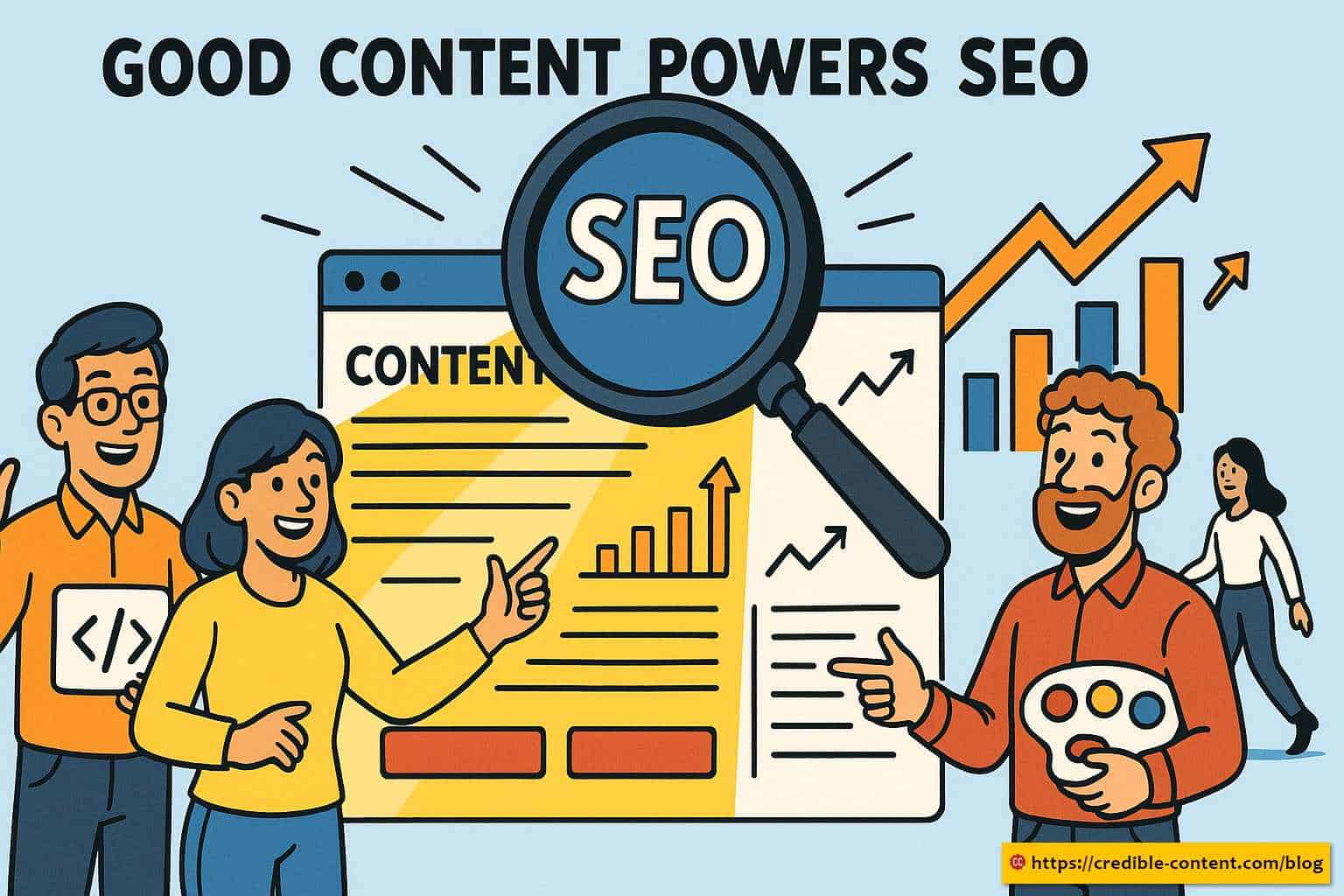
Good content writing powers SEO
A beautiful site that no one finds is a wasted effort. That’s where SEO copywriting becomes the missing link between design, development, and visibility.
Why SEO can’t be an afterthought
Too many agencies launch sites and only then ask, “How do we make it rank?” By that time, it’s too late. The site structure is locked, the content doesn’t align with search intent, and clients wonder why traffic never shows up.
Search Engine Journal reports that 93% of online experiences start with a search engine (searchenginejournal.com). That means if your site isn’t optimized from day one, you’re invisible to most of your market.
How content-first design supports SEO
When you start with content, SEO gets baked into the foundation.
- Keywords guide navigation labels and page titles.
- Headlines and subheads align with search intent.
- Metadata and descriptions are written to attract clicks, not added as an afterthought.
- Internal links strengthen site architecture and keep visitors moving through the funnel.
This isn’t keyword stuffing. It’s strategic writing that makes sites both readable and findable.
Designers and developers as SEO allies
Designers and developers don’t need to become SEO experts, but they should understand how copy shapes results. A content-first workflow makes it easy: the writer provides keyword-rich copy, and the design/development team integrates it naturally into the build. The end result is a site that looks professional, works smoothly, and gets found.
Example: keyword mapping in action
On one project, a development team built a flawless site, but the content never mentioned the client’s main service in plain terms. They were buried on page three of Google. After I rewrote the copy with proper keyword mapping, they moved into the top three results within weeks. Same design. Same code. Different words. And a completely different business outcome.
Stop handing clients sites that look amazing but never show up in search. Pair your builds with SEO copywriting, and you’ll deliver websites that perform on every level – design, function, and visibility.
Strong content is the foundation of great design
Websites don’t fail because the typography was slightly off or because the shade of blue didn’t hit the right emotional note. They fail because the message doesn’t connect. Content is the foundation. Design is the amplifier. When you get both right, you build sites that not only look stunning but also convert, rank, and bring in revenue.
What we’ve seen so far
- Design without content leaves clients frustrated and agencies blamed.
- Developers can’t carry a project when the words are missing.
- UX lives and dies on microcopy, clarity, and navigation.
- Agencies that package content writing avoid delays and boost revenue.
- Content-first strategy saves time, strengthens SEO, and makes every design more persuasive.
The evidence is overwhelming – research, case studies, and real-world stories all point to the same truth. Content-first isn’t just a preference. It’s the only sustainable way to build websites that actually perform.
Where you stand as an agency
You can keep doing what most agencies do: hand projects over to clients for content, wait months, and launch with words that weaken your design. Or you can take control. Bring in a professional content writer or online copywriter to own the message from the start. The difference shows up in smoother workflows, happier clients, stronger portfolios, and higher profits.
Don’t let weak copy sabotage great design. Don’t let client delays drag your projects down. And don’t let your agency look smaller than it really is. Content-first design turns your work into something more than a website– it turns it into a business asset.
Want your next project to launch on time and perform better than the last? Let’s work together. I’ll handle the words while you handle the visuals and code. Together, we’ll deliver websites that look sharp, read sharp, and convert like they’re supposed to.

